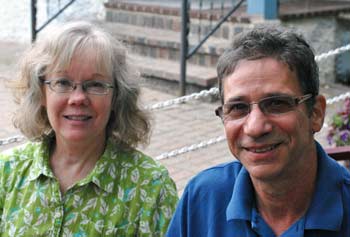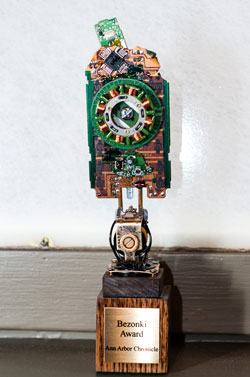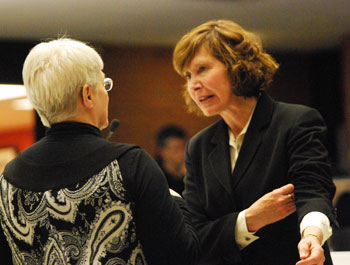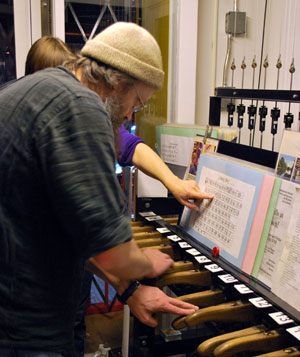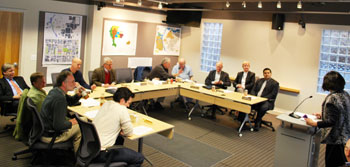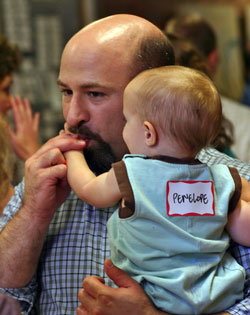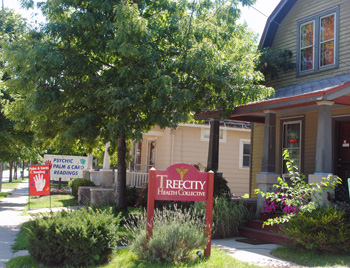Column: Soup’s Still On at Le Dog
I’ve been a Le Dog groupie since I moved to Ann Arbor 18 years ago. I couldn’t believe my luck: Just a couple of blocks from work, I could get some of the best soups on this planet, served from an odd red hut inexplicably called Le Dog.

Miki Wartha and Jules Van Dyck-Dobos at the Main Street Le Dog, which is expanding. (Photos by the writer.)
Over the years I’ve never eaten a hot dog there, but Jules Van Dyck-Dobos has become a friend. My habits, however – and my workplace – have shifted. More oriented now to the city’s west side, I view Le Dog’s Main Street location as my go-to spot for pozole, cassoulet, Marrakesh stew, peanut udon – and, of course, lobster bisque. If I don’t eat there once a week, something in my life has gone seriously awry.
I understand the eccentric charm of the East Liberty spot, which Jules refers to as his “baby.” That’s where it all began for him 35 years ago, and not much changed in the cramped, unheated, un-air-conditioned space since then. But when he told me earlier this year that he wasn’t re-opening there this season, and instead would focus on expanding the Main Street location, all I could say was: “Hooray!”
Le Dog’s less-known site has been open for 17 years in the old Kline’s department store building at 306 S. Main. Soups were made at the hut on Liberty then ferried over to Main Street, where his wife Ika has been in charge. Because the counter faces the inside lobby, waiting in line doesn’t involve shivering or getting soaked or breathing exhaust fumes or any of the downsides at the Liberty location.
Expanding on Main Street – in a building owned by local landlord Ed Shaffran – is also part of a succession plan, as Jules and Ika’s son, Miki Wartha, takes on more responsibility for the business. Jules turns 66 next month, and while he’s not retiring, he hopes to scale back a bit.
A few days ago, we talked about all of this, and a lot more, for an interview you can read below. I’m grateful that Jules carved out some time to serve up his thoughts – about his past, the reason he decided to keep his business small, the origin of the name “Le Dog” (it’s not what you might think), possible menu changes, his friendships with other local families, his hopes for the future.
In a column he wrote for Gastronomica a few years ago – now part of the “Fried Walleye and Cherry Pie” anthology – Jules acknowledged that his business on East Liberty had become an Ann Arbor landmark. That’s true, but not just because of the distinctive red facade. He’s built Le Dog into a special piece of this town that transcends its location – and this transition will bear that out.
Jules told me he’s happy with the changes taking place, but a little worried that regulars of the East Liberty spot won’t seek him out on Main Street. I hope my fellow soup aficionados will allay his fears. Le Dog at 306 S. Main is open weekdays from 11:30 a.m. until 2:30 p.m. You should go. [Full Story]










